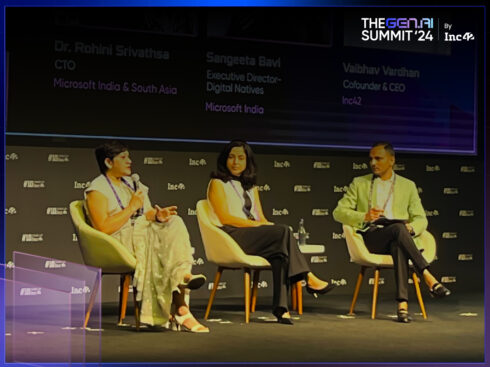
SUMMARY
Executive summaries, excel sheets, business insight, business news 2020 and updates that are more data dumps than the torch-in-the-tunnel they are meant to be are getting to be the norm rather than the exception
There’s a need – more than ever – for both clarity and brevity in reports to stop confusion, frustration and data fatigue
Sharing of information is the lifeblood of modern business
I met a cofounder the other day on Skype (yes, that’s the neighborhood cafe these days) and casually asked how life was treating her. As expected, she started ranting about how things are down, how 2020 turned out to be the exact opposite of what she had planned when the clock struck 12 at last New Year’s bash, and how it’s so unfair.
Almost reflexively (after all, this is becoming a familiar format by now), I took a deep breath, turned on my agony uncle avatar and launched into my spiel on how the coronavirus has indeed been a wrecking ball from hell when the lady turned sharply, rolled her eyes and said:
“Who said anything about coronavirus? I’m talking about MIS reports!” I was taken aback with the unexpected protagonist of her story till she resumed to clarify, “Winding, fuzzy, off-the-point and sometimes just plain untrue. Is it just me, or has the quality of pitch decks, daily reports and business updates hit an all-time low? That’s the real wrecking ball Manoj!”
It’s not just her, of course. We’ve all felt it at various points of our career.
Executive summaries, excel sheets, business insight, business news 2020 and updates that are more data dumps than the torch-in-the-tunnel they are meant to be are getting to be the norm rather than the exception.
This is both sad and worry-some. In these times of data overload that we live in, there’s a need – more than ever – for both clarity and brevity. Every decision in business – be it at the planning, talent, operations, marketing or sales level – is (or should be) data-driven. In the knowledge age, information that is diffused, hidden or delayed is information that is denied. And the consequences can be fatal – resulting in leadership blind spots and flawed decisions that can even sink the ship.

There’s a need – more than ever – for both clarity and brevity in reports to stop confusion, frustration and data fatigue.
Given the uncertainties and ambiguities of the current time – not to mention competition – margins of error are narrower than ever. All of which makes this the perfect time for a quick 101 on the ‘spirit of reportage’. Mind you, both letter and spirit (intent) are important here. You may have ticked all the KPI boxes (the ‘letter’ part), but if you have either not understood the intent behind the exercise or honoured its true spirit in your communication, the goal will remain unmet.
Given that smart and agile decisions is the dietary advice experts recommend for fiscal fitness in business, it sounded like a good idea to categorise the list of snafus and pitfalls under food names.
Here we go then:
The Russian Salad

A platter full of sliced, diced and minced nuggets of data – The Russian Salad.
This is a ‘format’ where no matter what you order, you end up getting a platter full of sliced, diced and minced nuggets of data that, at first glance, seems to have everything that was on offer at the Sunday farmer’s market. This reminds me of an SEO project on social listening that I was leading recently. The report I got was choc-a-bloc with all the various kinds of posts we had published on our social media handles during the timeline in question, neatly stacked one after the other in an endless PPT slideshow.
It had all the ‘hygiene elements’ in place – date and time of posting, names of people who had LIKED and SHARED, and the geographies they were from. And yet somehow, the more I bit into it, the more the bland-ness of the salad hit me in the gut. For a social listening exercise, all I was getting was pin-drop silence.
The problem? The executive in charge had shared a lot of action and plenty of data, but none of this was actionable data. He had shared information, not insight. That’s where the problem of lack of insightful reports comes.

The reports should have clear statistical data
For example, the report dwelled on a post that hadn’t performed well, but the deck stopped dead after that: It didn’t take that all-important next step that would explain exactly why it didn’t work, which also meant that there was no way we could correct the course. I also discovered this post that didn’t get any direct mention or interaction in the comment box. Still, I had got people talking about it in other social media groups and pages.
Since they were positive conversations, here was a definite ‘moment of triumph’ for our strategy team. The business report insight, however, completely missed the win because its vision was blinkered – focusing only on the posts it was asked to examine in the job brief, without looking up, left or right.
We also had this campaign where we apparently got a good deal of ‘fan attention’, but later when I scratched deeper, I realized that the ‘share of voice’ (percentage of a brand’s engagement as a ratio of the engagement of the overall market pie or that of its competitors) was low – significantly bringing down the value. That’s not all.
The report – while detailing out all the tools that were being employed for listening – contained nothing about the efficiency of each; This meant that my real objective, which was to fine-tune my tool investment strategy, was left hanging. Finally, there was no deep-dive on conversion, which meant there was no way I could optimize RoI.
The other occasion when I had to tuck into a smorgasbord (the traditional Scandinavian buffet) was the day a stack of resumes landed on my desk from the recruitment department. Here was a story without a plot. How did our top and bottom-funnel look like (and what was the ratio?)
Did we get sufficient resumes for each position to justify the hiring strategy and media outlay cost? What was the conversion?
All Russian Salads have one thing in common: They are an end-in-themselves. Once you consumed it, the experience was over. It didn’t take the journey forward. Back to square one.
The Super-Sized Whopper

Size is not always the solution to all life’s problems
This is scary. Imagine asking for a regular burger at McDee’s and getting a giant Burger King Whopper that’s been super-sized with a vengeance. Maybe because someone somewhere believes that size is the solution to all life’s problems.
This monster falls on your lap(top) when you ask for a specific piece of dope but get a generic mountain of data in return. You had asked for the essential insights specifically because you don’t have the time to trawl through the haystack but now find yourself doing exactly that as you are flooded with excels sheets, ppt slides and mail screenshots that will take an entirety to piece together, if at all.
Volume is usually only 50% of your problem here and not the major challenge. The bigger hurdle is the sea of numbers and stats that don’t carry friendly flags or runway flares to guide you along. In other words, information without indicators.
So you stare at multiple tabs on Excel that look like clones, and you don’t know which is more important or relevant. You run into several lookalike attachments with none of them saying, “I’m the one you are looking for!” You ask for a report on hiring updates from your recruitment manager and before you know it, are saddled with a heap of resume-dumps that all seem to have come from the same candidate.
There is only one way you can react to a supersized whopper. Take a weary look at it, have a slight bite (your appetite has come down drastically by now as well!) and throw the rest of the effort, resource and man-hour down the bin. Everyone loses.
Other Items On The Menu

When going deep in the business insights you will get a number of items on the menu
There are various other kinds of surprises on the menu, of course. There’s the MIX-UP where you wanted something and are served something entirely different (misaligned mindsets).
There’s the SUGARCOAT where an ‘unsavory’ situation is garnished with pleasant distractions (the milder version of an outright lie). There’s the LEFTOVER where you get stale figures, and obsolete stats hurriedly rustled up to resemble a meal.
There’s the HIGH-CAL report that comes with fancy recommendations and expensive solutions when you can easily hack growth at a fraction of the cost if you innovated sufficiently. There’s the JUNK FOOD – Short-term Quick Fixes that sound irresistible at the moment but run out of steam in the middle of a campaign (Knee-jerk marketing plans, for example, that put all their eggs in the ‘viral video’ basket or piggyback on trending meme’s for their ‘5 minutes of fame’, instead of working on a holistic and sustainable long-term approach).
Don’t Lose Your Appetite For Information: Just Follow The Art-Science-Craft Method For Your Next MIS Report
Report writing is, ideally, a sweet intersection of art, science and craft.
The Art

The art of business report writing comes with practice
The art of business report writing is all about mastering the intangibles. Sure, you HEARD your boss saying s/he wants a rundown of the last social media campaign, but did you LISTEN to the unsaid bits?
In other words, did you catch the ‘wavelength’, latch onto the undercurrents & nuances and get to the ‘intent’ of the ask? Which are the areas you need to double-down upon (and which are okay to skim)? Is there a ‘hidden take-home’ the KPI’s do not mention? What are the broader business goals and loops your business report links with?
Address potential gaps by insisting on a free-flowing conversation on expectations right at the outset, pass that information on along the workflow, and keep two-way channels of communication open to handle doubts on-the-go. The art is equally important when you are presenting your report: Make sure the right person sees it at the right time and if you can help it, in the right mood.
The Science

The Science of report writing is all about widening your vision
The science part is about wielding your X-Ray vision. Once you know precisely what you have to dig up, you will have to employ the right tools and tech stacks to drill down to the relevant areas quickly and accurately. The more granular, the more centered (unbiased) and the more inclusive (factoring in all possible angles) your presentation is, the better the purpose will be served.
Finally, make sure the files and formats you are using are compatible with the systems of the person who will consume your report, that you have made documents shareable (if on cloud or shared drives). That necessary security and compliance are met.
The Craft

Craft bridges the gap between art and science
The craft of reports and presentations bridges the art and science. Once you have got the WHAT out of the way, it’s essential to focus on the HOW. Craft is all about keeping things brief and to the point, employing the right language and style of narrative (it’s best to avoid dramatic turns of phrase and keep things conversational), emphasizing/highlighting/flagging the areas you want the attention to go to first, and following best practices of structure and flow (such as an introduction that covers everything but doesn’t reveal too much, seamlessly interlinked chapters that take the narrative forward cogently and a sharp yet comprehensive summary).
Sharing of information is the lifeblood of modern business. When you master it, you amp up performance, boost team morale and ensure a competitive edge. Admittedly, some people have a knack (call it sixth sense if you will) about these things, and it also depends on interpersonal rapport and vibes. Still, it is best to take the intuitions and variables out of the equation by turning it into a step by step process that, over time, becomes the second habit.


























